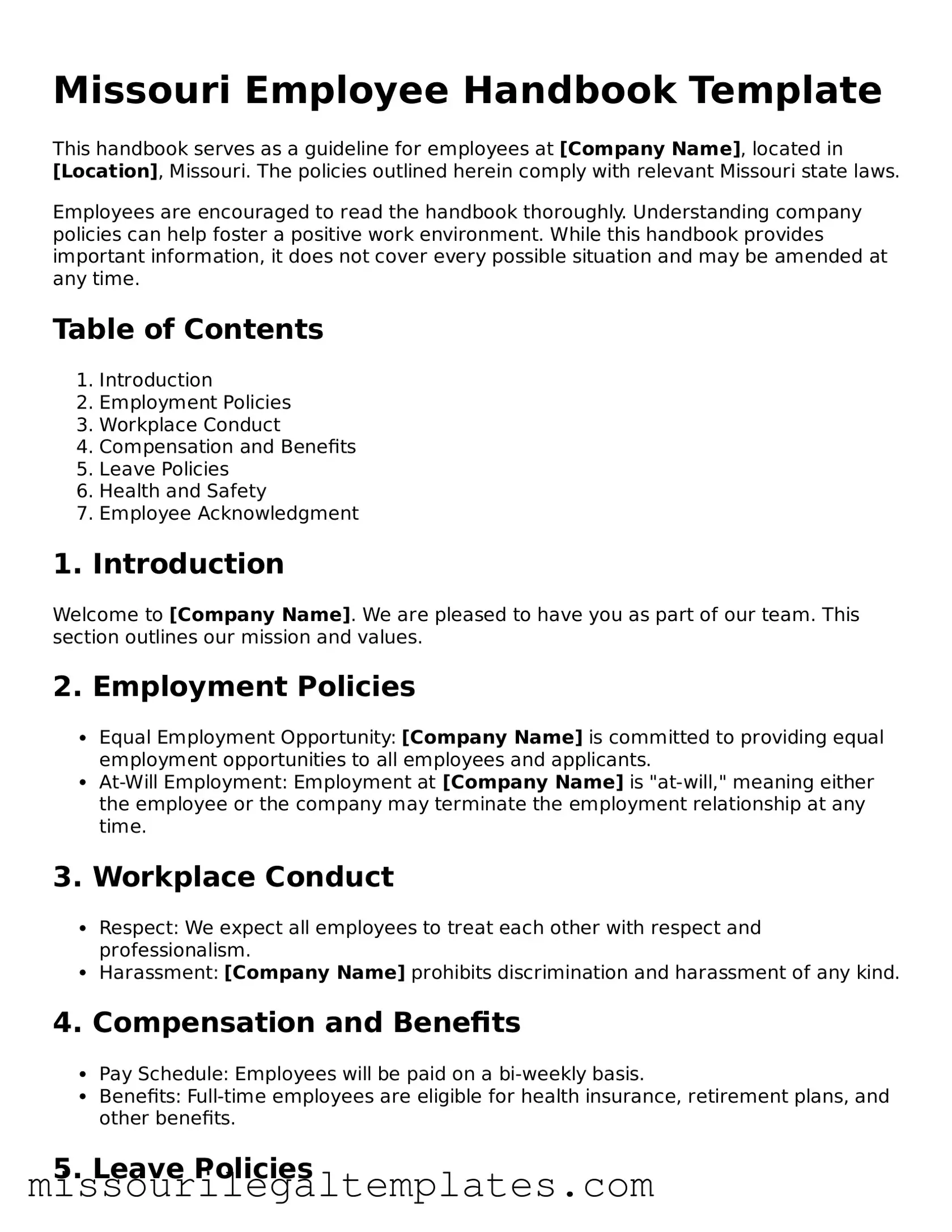Missouri Employee Handbook Template
This handbook serves as a guideline for employees at [Company Name], located in [Location], Missouri. The policies outlined herein comply with relevant Missouri state laws.
Employees are encouraged to read the handbook thoroughly. Understanding company policies can help foster a positive work environment. While this handbook provides important information, it does not cover every possible situation and may be amended at any time.
Table of Contents
- Introduction
- Employment Policies
- Workplace Conduct
- Compensation and Benefits
- Leave Policies
- Health and Safety
- Employee Acknowledgment
1. Introduction
Welcome to [Company Name]. We are pleased to have you as part of our team. This section outlines our mission and values.
2. Employment Policies
- Equal Employment Opportunity: [Company Name] is committed to providing equal employment opportunities to all employees and applicants.
- At-Will Employment: Employment at [Company Name] is "at-will," meaning either the employee or the company may terminate the employment relationship at any time.
3. Workplace Conduct
- Respect: We expect all employees to treat each other with respect and professionalism.
- Harassment: [Company Name] prohibits discrimination and harassment of any kind.
4. Compensation and Benefits
- Pay Schedule: Employees will be paid on a bi-weekly basis.
- Benefits: Full-time employees are eligible for health insurance, retirement plans, and other benefits.
5. Leave Policies
- Sick Leave: Employees are entitled to a certain number of paid sick days annually.
- Family and Medical Leave: [Company Name] complies with the Family and Medical Leave Act (FMLA).
6. Health and Safety
The safety and health of employees is a priority at [Company Name]. Employees should report any unsafe working conditions immediately.
7. Employee Acknowledgment
By signing below, I acknowledge that I have received, read, and understood the [Company Name] Employee Handbook.
Employee Name: [Employee Name]
Date: [Date]
